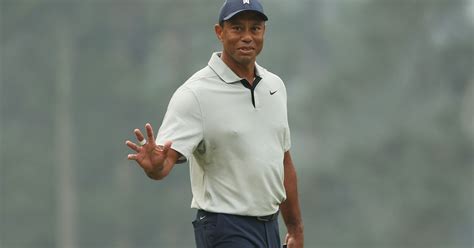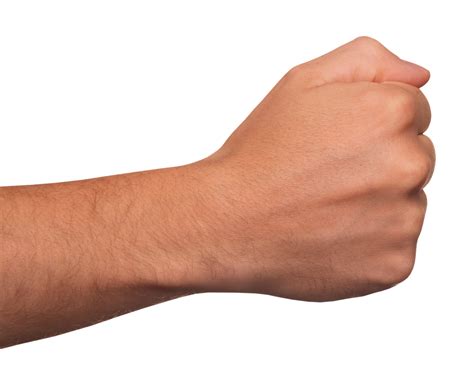
Jordan Spieth’s audacious gamble on the eighth hole at the U.S. Open, resulting in a shot from near a hospitality area, has ignited the golf world, sparking widespread discussion and debate over risk versus reward.
PINEHURST, N.C. – Jordan Spieth, never one to shy away from the unconventional, found himself in an extraordinary situation during the first round of the U.S. Open at Pinehurst No. 2 on Thursday. His tee shot on the par-4 eighth hole sailed far right, landing perilously close to a hospitality area, forcing him to make a decision that ultimately had the golf world buzzing. The former U.S. Open champion opted to play the ball as it lay, a choice that showcased both his daring approach and the inherent challenges of Pinehurst.
Spieth’s errant drive nestled near some tables and chairs outside a corporate hospitality tent. After a lengthy discussion with rules officials, he determined that he had a clear path to the green, albeit one fraught with potential disaster. Instead of taking an unplayable lie penalty, which would have afforded him a more favorable position, Spieth decided to play the ball from its precarious location. The resulting shot saw him hack the ball out, advancing it a considerable distance but still leaving him a tricky approach to the green.
“I was just trying to hit it somewhere near the green,” Spieth explained afterward. “It wasn’t exactly the ideal spot, but I figured I had a better chance playing it than taking a drop.”
The decision immediately drew mixed reactions. Some lauded Spieth’s aggressive mindset and willingness to take on a difficult shot, while others questioned the wisdom of risking a potentially disastrous outcome early in a major championship. Social media erupted with commentary, with fans and analysts alike weighing in on the merits of Spieth’s gamble.
“That’s vintage Spieth,” one golf commentator tweeted. “He’s always willing to take on the impossible. Whether it pays off is another story.”
Spieth, known for his imaginative shot-making and occasional forays into unconventional territory, defended his decision. He argued that the lie, while challenging, offered him a reasonable opportunity to advance the ball towards the green. He also acknowledged the inherent risk involved, stating that he was fully aware of the potential consequences.
“Look, I’m not going to lie; it was a risky shot,” Spieth admitted. “But I felt like I could pull it off. Sometimes you have to trust your instincts, and that’s what I did.”
Ultimately, Spieth’s gamble did not yield the desired result. His second shot left him with a difficult up-and-down, and he was unable to save par, carding a bogey on the hole. Despite the setback, Spieth remained undeterred, battling back to post a respectable score in the first round. The incident, however, served as a vivid reminder of the unique challenges posed by Pinehurst No. 2 and the unpredictable nature of major championship golf.
The course itself played a significant role in Spieth’s predicament. Pinehurst No. 2, renowned for its undulating greens, unforgiving sandy areas, and strategically placed bunkers, demands precision and strategic thinking. Even the slightest miscalculation can result in a difficult lie or a challenging recovery shot. Spieth’s experience on the eighth hole underscored the importance of accuracy and course management, particularly in the pressure-cooker environment of a U.S. Open.
Moreover, the incident highlighted the evolving nature of risk assessment in professional golf. Players are increasingly willing to take on high-risk shots, particularly when they believe the potential reward outweighs the potential consequences. This trend reflects a growing emphasis on aggressive play and a willingness to push the boundaries of conventional strategy. Spieth, with his penchant for daring shots and unconventional tactics, embodies this approach to the game.
The drama surrounding Spieth’s shot extended beyond the immediate outcome of the hole. It also sparked a broader discussion about the role of course design and the challenges it presents to players. Some argued that Pinehurst No. 2, with its notoriously difficult layout, unfairly penalizes even the slightest mistake. Others contended that the course’s difficulty is precisely what makes it a worthy test of golf’s finest players.
“The U.S. Open is supposed to be the toughest test in golf,” one golf analyst observed. “Pinehurst delivers on that promise. It demands precision, patience, and mental fortitude. Spieth’s shot on the eighth hole is a perfect example of the challenges players face out there.”
Spieth’s adventure on the 8th also brought attention to the often-overlooked rules of golf. The meticulous application of these rules, especially in unusual circumstances, can significantly impact a player’s strategy and decision-making. The extended consultation with rules officials before Spieth played his shot highlighted the importance of understanding the rules and their potential implications.
“Knowing the rules inside and out is crucial,” a former rules official commented. “Players need to be aware of all their options and the potential consequences of each decision. Spieth clearly considered his options carefully before deciding to play the ball as it lay.”
Beyond the tactical and strategic implications, Spieth’s shot also offered a glimpse into the psychological aspect of the game. The ability to remain calm and focused in the face of adversity is a hallmark of successful golfers. Spieth’s reaction to the challenging situation on the eighth hole demonstrated his mental toughness and his ability to maintain composure under pressure.
“It’s easy to get frustrated when things don’t go your way,” Spieth said. “But you can’t let it affect your game. You have to stay focused and keep battling.”
In the days following the incident, the discussion surrounding Spieth’s shot continued to reverberate throughout the golf world. Analysts dissected the decision from every angle, examining the potential risks and rewards, the course conditions, and the psychological factors at play. The incident served as a reminder of the unpredictable nature of golf and the enduring appeal of the game’s most challenging tests.
Ultimately, Spieth’s gamble on the eighth hole at the U.S. Open will be remembered as a defining moment in the tournament. Whether it is viewed as a stroke of brilliance or a moment of folly, it undoubtedly added to the drama and excitement of the championship. It showcased Spieth’s unique blend of talent, audacity, and mental fortitude, qualities that have made him one of the most compelling figures in golf.
The incident also underscores the changing landscape of professional golf, where aggressive play and risk-taking are increasingly valued. Players are willing to push the boundaries of conventional strategy in pursuit of victory, and Spieth’s shot on the eighth hole exemplified this trend.
In conclusion, Jordan Spieth’s audacious gamble at the U.S. Open serves as a compelling case study in risk assessment, strategic decision-making, and the psychological aspects of golf. It highlights the unique challenges posed by Pinehurst No. 2 and the enduring appeal of major championship golf. The incident will undoubtedly be debated and analyzed for years to come, serving as a reminder of the unpredictable nature of the game and the enduring quest for excellence.
Pinehurst No. 2, with its unique challenges and unforgiving nature, continues to test the world’s best golfers. Spieth’s decision captured the essence of the U.S. Open: a battle of skill, strategy, and mental fortitude against a formidable opponent. The ripple effects of that single shot will likely influence future strategies and decisions on similarly challenging courses.
Furthermore, the episode served as a valuable lesson for aspiring golfers. It underscored the importance of understanding the rules of the game, assessing risk versus reward, and maintaining composure in the face of adversity. While not every golfer would have made the same decision as Spieth, his willingness to take on a difficult shot, even in a major championship, demonstrated the boldness and creativity that are essential for success in the sport.
The U.S. Open, renowned for its demanding conditions and strategic complexities, consistently produces memorable moments. Spieth’s shot on the eighth hole adds to the rich tapestry of U.S. Open lore, serving as a testament to the unpredictable nature of the game and the enduring human drama that unfolds on the fairways.
The shot also provided a talking point for discussions about course design and its impact on player strategy. Some argued that Pinehurst No. 2’s design philosophy, which emphasizes strategic positioning and penalizes errant shots, contributed to Spieth’s predicament. Others maintained that the course’s difficulty is precisely what makes it a true test of golfing skill.
The debate surrounding Spieth’s decision highlights the subjective nature of golf analysis. There is no single “right” answer when it comes to assessing risk and reward. Ultimately, the best decision depends on a variety of factors, including the player’s skill level, course conditions, and personal preferences.
Spieth’s shot not only captivated golf fans but also attracted attention from casual observers. The incident served as a reminder of the sport’s unique appeal, which lies in its combination of athleticism, strategy, and mental toughness. Even those unfamiliar with the intricacies of golf could appreciate the drama and excitement of Spieth’s audacious gamble.
In the aftermath of the U.S. Open, Spieth’s shot will undoubtedly be analyzed and discussed for years to come. It will serve as a case study for aspiring golfers and a reminder of the unpredictable nature of the game. Whether it is viewed as a brilliant display of skill or a costly mistake, it will forever be etched in the annals of U.S. Open history.
The media coverage surrounding Spieth’s shot also played a significant role in shaping public perception. Television commentators, print journalists, and online bloggers all weighed in on the decision, offering their perspectives and analyses. The extensive media coverage helped to amplify the drama and excitement of the moment, further solidifying its place in golf lore.
The shot also offered a window into Spieth’s personality and his approach to the game. Known for his creativity, his competitive spirit, and his willingness to take risks, Spieth embodies the qualities that make golf such a compelling sport. His shot on the eighth hole was a perfect reflection of his unique style and his unwavering commitment to excellence.
Furthermore, the episode highlighted the importance of mental toughness in golf. Spieth’s ability to remain calm and focused in the face of adversity allowed him to overcome the challenges of the eighth hole and continue to compete at a high level. His mental fortitude serves as an inspiration to golfers of all levels.
The legacy of Spieth’s shot extends beyond the immediate outcome of the U.S. Open. It serves as a reminder of the unpredictable nature of golf and the enduring appeal of the game’s most challenging tests. It is a moment that will be remembered and discussed for years to come, serving as a testament to the drama, excitement, and human drama that unfold on the fairways. The story of Spieth’s adventure encapsulates not just a single shot but the spirit of the game itself, where skill, strategy, and a little bit of daring can lead to unforgettable moments.
The impact of Jordan Spieth’s audacious shot at the U.S. Open transcends mere statistics; it’s a study in decision-making under immense pressure, a demonstration of how split-second choices can define an athlete’s narrative within a high-stakes environment. While the immediate consequence was a bogey, the long-term reverberations are far more profound, prompting discussions on risk assessment, course management, and the very essence of competitive golf.
The nuanced context surrounding Spieth’s gamble involved not only the physical challenges posed by Pinehurst No. 2 but also the psychological warfare inherent in major championships. The course’s notorious difficulty demands unwavering precision, and even slight deviations from the ideal trajectory can result in daunting scenarios. Spieth’s errant drive exemplified this challenge, placing him in a position that required both exceptional skill and unwavering mental fortitude.
His decision to play the ball as it lay, rather than opting for a penalty drop, speaks volumes about his competitive spirit and his belief in his own capabilities. While a more conservative approach might have minimized the risk of further complications, Spieth’s choice reflected a willingness to embrace the challenge and seize the opportunity to salvage the hole.
The ensuing shot, executed from an unconventional lie amidst the hospitality area, showcased Spieth’s remarkable talent and his ability to adapt to unforeseen circumstances. Despite the inherent difficulties, he managed to advance the ball a significant distance, demonstrating his mastery of the game’s technical aspects.
However, the ultimate outcome – a bogey on the hole – underscores the inherent risks associated with such daring maneuvers. While Spieth’s gamble did not pay off in this particular instance, it served as a reminder that even the most skilled golfers are not immune to the unpredictable nature of the game.
Moreover, the incident highlighted the evolving landscape of professional golf, where aggressive play and risk-taking are increasingly valued. Players are constantly seeking new ways to gain a competitive edge, and Spieth’s shot exemplified this trend. His willingness to push the boundaries of conventional strategy reflects a growing emphasis on innovation and a desire to redefine the limits of what is possible on the golf course.
The media coverage surrounding Spieth’s shot further amplified its significance, transforming it into a defining moment of the U.S. Open. Television commentators, print journalists, and online bloggers dissected the decision from every angle, offering their perspectives and analyses. This extensive media attention helped to solidify the shot’s place in golf lore, ensuring that it will be remembered and discussed for years to come.
The incident also provided valuable insights into Spieth’s personality and his approach to the game. Known for his creativity, his competitive spirit, and his unwavering commitment to excellence, Spieth embodies the qualities that make golf such a compelling sport. His shot on the eighth hole was a perfect reflection of his unique style and his unwavering pursuit of victory.
Beyond the tactical and strategic implications, Spieth’s shot also offered a glimpse into the psychological aspect of the game. The ability to remain calm and focused in the face of adversity is a hallmark of successful golfers. Spieth’s reaction to the challenging situation on the eighth hole demonstrated his mental toughness and his ability to maintain composure under pressure.
In the aftermath of the U.S. Open, Spieth’s shot will undoubtedly be analyzed and discussed for years to come. It will serve as a case study for aspiring golfers and a reminder of the unpredictable nature of the game. Whether it is viewed as a brilliant display of skill or a costly mistake, it will forever be etched in the annals of U.S. Open history.
Frequently Asked Questions (FAQ)
1. What exactly did Jordan Spieth do that’s causing so much buzz?
Jordan Spieth’s tee shot on the par-4 eighth hole at the U.S. Open landed near a hospitality area. Instead of taking a penalty for an unplayable lie, he chose to play the ball from where it was, resulting in a risky and unconventional shot that has sparked debate in the golf world. He hacked the ball out of the tricky spot and onto the green, although he eventually bogeyed the hole.
2. Why didn’t Spieth just take a drop? What are the rules around that?
Spieth opted not to take a drop because he believed he had a reasonable chance of advancing the ball towards the green from its original position. Taking a drop would have incurred a penalty stroke and might not have provided a significantly better lie. The rules regarding unplayable lies allow a player to take relief, typically with a one-stroke penalty, by dropping the ball within a specified distance of the original lie, keeping the original spot between himself and the hole, or dropping back on a line. Spieth likely assessed that the risk of the shot from its current location was less than the perceived disadvantage of taking a penalty and potentially still facing a difficult approach. A rules official was consulted to ensure he was within his rights to play the ball as it lay.
3. Where on the course did this happen and why is that location important?
The incident occurred on the eighth hole at Pinehurst No. 2. This course is known for its challenging layout, including undulating greens, unforgiving sandy areas, and strategically placed bunkers. Even small errors can lead to difficult lies, making it a demanding test for golfers. The severity of Pinehurst No. 2 adds weight to Spieth’s decision, highlighting the risks and potential rewards involved.
4. How has the golf world reacted to Spieth’s decision and the shot itself?
The reaction has been mixed. Some have praised Spieth’s aggressive mindset and willingness to take on a challenging shot, while others have questioned the wisdom of risking a potentially disastrous outcome, especially early in a major championship. Social media has been filled with commentary, with fans and analysts offering their perspectives on the merits of Spieth’s gamble. Some labeled it vintage Spieth due to his inclination for pulling off impossible shots.
5. Did this one shot ultimately affect Jordan Spieth’s performance in the U.S. Open?
While Spieth did bogey the eighth hole as a result of the shot, he managed to recover and post a respectable score in the first round. It’s difficult to definitively say how much this one shot affected his overall performance, but it certainly presented a challenge he had to overcome. It also demonstrated his resilience and ability to maintain composure despite facing adversity early in the tournament. The long-term impact would depend on his subsequent rounds, but the immediate effect was a bogey on that particular hole, requiring him to adjust his strategy for the remainder of the tournament.









